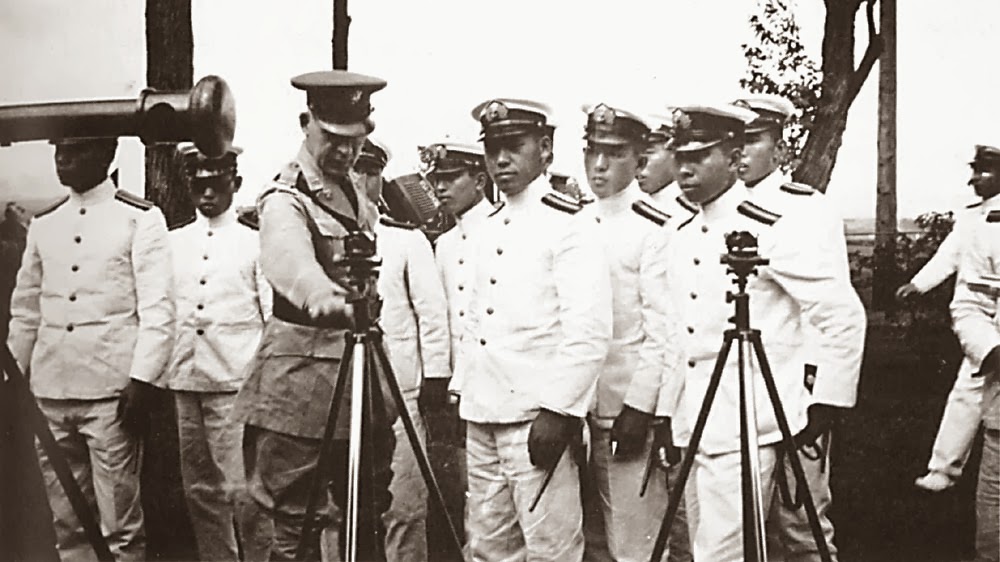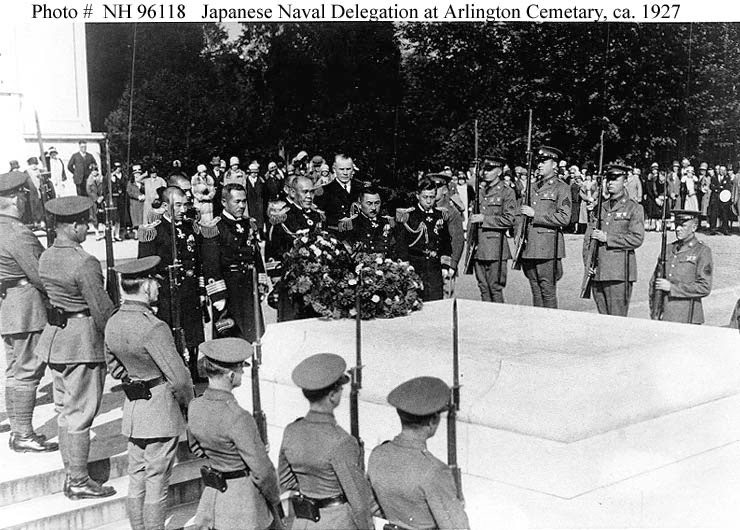First Japanese bombshell dropped on Hawaii in 1933 - warning shot for the future US-Japan War
Eight years before the Dec. 7, 1941, Japanese attack on Pearl Harbor, a Japanese-language publication hit Honolulu like a bombshell, predicting war with the United States and an inevitable Japanese victory. The key tactic would start by an air attack on Pearl Harbor.
However, an air attack on Pearl Harbor by Japanese carriers was also the topic of many local pre-war articles in publications like Paradise of the Pacific, the predecessor to Honolulu Magazine (see below). This includes a pre-war article where four Japanese carriers north of Oahu attack Pearl Harbor on a Sunday morning when most people were sleeping. Most stated that this attack concept was SO WELL KNOWN that the Japanese would never attempt it!
The US Army and Navy also staged many major Pearl Harbor air attack exercises before December 7, 1941, and in fact the reason why most people thought the Sunday December 7 attack was just another drill- however badly timed when most people were still sleeping. This is why there is the famous Pearl Harbor message "Air Raid, Pearl Harbor -This Is No Drill..."
Nichibei-sen Miraiki—Account of the Future US-Japan War.
Customs reiterated to the press that consignees had first called attention to the novelette because it was “detrimental to Japanese-American relations.” Honolulu was a Navy town, and Japanese-Americans were upset that the novelette described U.S. warships in great detail, and seemed designed to stir a patriotic reaction from “the younger generation of Japanese.”
By Jamie Bisher
The first Japanese bombshell dropped on Hawaii in late 1933. At first glance, it was merely a crate of magazine supplements offloaded from the SS President Taft and addressed to George Kojima’s Honolulu bookstore.
It was written by a retired Japanese naval officer, endorsed by admirals of the Imperial Navy and distributed by a new Tokyo magazine angling for an expatriate following.
Account of the Future US-Japan War was a cut above other war fiction of the day.
It was blessed with two unusual forewords, one written by Adm. Kato Kanji, member of Japan’s Supreme War Council, and another by Vice Adm. Suetsugu.
The former claimed to have “read this story through without once laying the book aside,” and praised it for emphasizing the “great importance which control of the air bears to national defense.”
Suetsugu recommended the book for “the general public as well as naval specialists” because of the astute glimpses it afforded of future warfare.
The author, Fukunaga Kyosuke, was a retired 44-year-old lieutenant commander in the Japanese naval reserve with the expertise to give readers insight into the strategy, tactics and weaponry of modern warfare.
His dramatic tale foretold the roles of naval air power, submarines, radio communications, intelligence, civil affairs, propaganda and other elements, as well as their shortcomings.
Fukunaga wrote like the Tom Clancy of his day.
One American reader, Maj. Edward F. Witsell, devoured the book. Witsell was a 1911 graduate of the Citadel who had served two tours in Japan at the U.S. Embassy, and was one of the few Japanese linguists in the U.S. Army.
He recommended that the Army Chief of Staff read a few choice passages “of military interest” in the novelette, starting with a description of Japan’s rapid thrusts at Guam, the Philippines and Hawaii.
Fukunaga’s novelette laid bare the fantasies of Japanese militarists.
It made no secret of Japan’s designs on China and Russia’s Maritime Provinces.
Underdog Japan could outmaneuver and defeat the superior forces of the United States through courage and guile.
Meanwhile, the United States would be disoriented by saboteurs, racial strife and isolationists.
“It is our country’s duty to stir up and incite the Japanese in Hawaii to attack the Americans there,” declared one Japanese character.
The Many December 7 Warning Shots
A. Kam Napier Honolulu Magazine
If the editors of Paradise of the Pacific, our predecessor, were aware of the Japanese publication Nichibei-sen Miraiki—Account of the Future US-Japan War, they didn’t mention it in the pages of the magazine.
However, by the mid-1930s, Paradise frequently commented on the likelihood of war.
(NOTE: Imperial Japan would invade China by July, 1937, while Germany would invade Poland in September, 1939; America did not enter the war until the Dec. 7, 1941, attack on Pearl Harbor. These excerpts from Paradise, predating some of those turning points, show tensions running high.)
Jan.1936: “[N]ewer chatter has arisen as to what might happen in the Pacific, the theorizing chiefly being directed toward … warring between Japan and the United States since the consensus of vagrant opinion seems to be that Japan would start it, if anything were started. … Says one ‘school of guessing:’ The Japanese might get a number of aircraft carriers within a few hundred miles of Honolulu, then swoop over the city (from an ‘unexpected’ angle) and drop bombs on forts, barracks, government buildings … unavoidably smiting, here and there, a hospital, a hotel or two …”
Aug.1937: “When is a war not a war? When Japan attacks Shanghai in 1932; when Japan carves Manchukuo out of Manchuria; when the Triple Alliance and the Triple Entente use Spain as a battlefield in 1937; when Japan opens hostilities in Northern China in 1937; and as far as America is concerned—not until the President, under the provisions of the [Neutrality] Act of May 1, 1937, says that it is a war.”
Oct.1937: “Over two thousand miles nearer Asia than any other important integral part of the United States, Hawaii will first feel the pulse of war if it ever throbs eastward from Asia. With aviation, radio, and other reducing factors making a teacup of the Pacific basin, Hawaii must be ready.”
















